
Definitive Issues from the 1938 Set
Updated - December, 2018
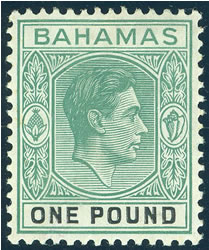
The King George VI definitive set from Bahamas features a number of color shades. There are also two different paper types. Like many King George VI sets, there are quite a few more printings than the assigned catalog numbers. The stamps were produced during the time period of 1938 until 1953. The set was replaced with the QEII Set in 1954. Although the Tercentenary of Eleutheran Settlement set was issued in 1948, some values continued to be printed until 1953. There are several extremely rare stamps that resulted from the use of the Post Office stock for the 1942 Landfall of Columbus 450th overprint anniversary set. So it is worthwhile to accurately sort the stamps from this set.
This set includes a number of major and minor print flaws, so there is a lot to look for if you buy a set of these stamps to study. See Richard Lockyer's article from Gibbons Stamp Monthly for more details on these aspects of the Hong Kong set. You can access a complete list of Richard's articles from this KGVI Stamps hosted site.
The higher values 1/, 5/ and £1 were printed on both chalk and substitute paper (no chalk coating is called substitute). So you will need to check for this factor on these stamps. Chalk paper was used to provide a better impression and to help against cleaning cancellations from higher value stamps for reuse. It is actually a coating that is applied to the paper prior to printing. There are several tests for chalk paper. One option is to use a silver coin which will draw a pencil-like line when rubbed gently against chalk paper. I do this in the white border. If you don't want to make a line, try looking for a shiny coating on the paper when viewed under a good light source. You can also rub your finger across the face of the stamp. It will slide easily over the chalk coated paper, and will feel like it is catching against the ordinary paper. Another test is the quality of the impression. The chalk treatment was used to insure a better quality printing. For the record, the term chalk is not scientifically accurate, but it is the term that has been used in the catalogs.
In addition to chalk and substitute paper, you will also find reference to thin striated paper which was used for the 1/ and 5/ issues (CW 15a and CW 16a) that were overprinted for the Landfall set. These two stamps are very scarce because most were overprinted. 60,840 1/ stamps and 12,600 5/ stamps were printed, but there is no record of how many were overprinted so it is currently impossible to determine the quantity that still exist. Thin Striated paper shows a horizontal ribbing on the surface. It is visible when held at an angle to the light. You can typically see the lines across the back of the stamp when placed against black paper and viewed under a strong lamp. The paper was used for several Colonies including a number of the Malay States during the early 1940's. The best example that you can find for this paper is the Leeward Islands 5/ (CW 11b, SG 112b). This stamp is pretty common and easily identified so it makes a good resource if you are trying to learn how to identify the Thin Striated Paper.
As you study the 1/, 5/ and £1 issues, you will note that there are distinct traits for the paper and gum of the stamps during various time periods. These periods include: 1938-1940, 1941-1942, 1942-1946 and 1948-1953. Understanding these traits can help you identify your stamps. See the blow up examples of the various 1/ printings to see the differences.
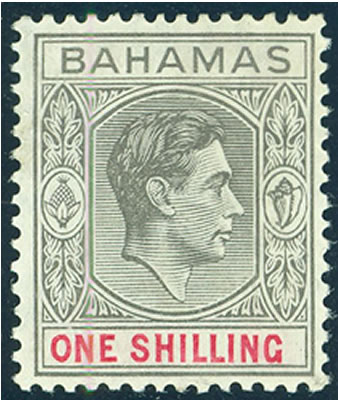
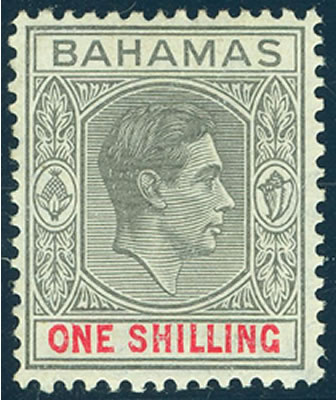
Chalk Paper with Brownish or Yellowish Gum
Thin Striated Paper with Clear Gum
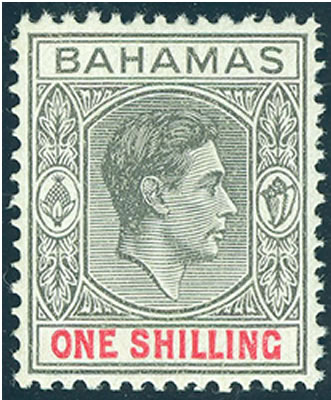
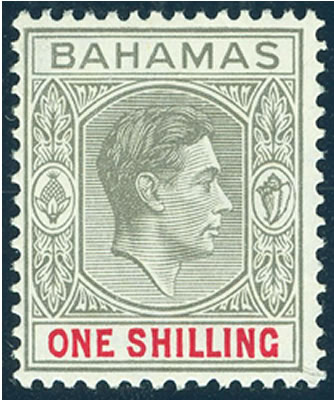
Substitute Paper with Clear Gum
Chalk Paper with White Gum
Once you have checked the paper type, start comparing the colors of the various values. You probably need a few copies of the stamps to accurately sort the surface and paper colors. I typically compare them against both white and black paper. Look for differences that are not too subtle. There is always variation during this time period, but typically the color changes result from mixing new ink for a second printing. They did not have computer color analysis during this time period, so things are just not exact, compared to today's technology.
As you compare colors, be aware that there were a number of printings that are generalized in the catalogues. One or two catalog listings might actually comprise as many as thirteen printings, so expect to see some subtle variations beyond the catalog listings. I am basing this statement on the color descriptions and print dates listed in the book "Bahamas Stamps and Postal Stationery to 1970" edited by Peter Fernbank and published by The Royal Philatelic Society and the British West Indies Study Circle. Please consult this publication if you want more details on the stamps from this set.
The catalog numbers shown below are from the 2008 Commonwealth King George VI Postage Stamp Catalogue (CW), 2013 Stanley Gibbons Stamp Catalogue (SG) and the 2011 Scott catalog (ST). You can access any of the publication web sites from my Links to British Colonial Stamp Sites.
The images were saved in a larger size and at a higher resolution so you can more easily see the details used in sorting them. Each of the stamp shown below has the Commonwealth description including the paper type for the higher values. Please be patient if it takes a few minutes for this page to load. Technically speaking, the 2/ and 3/ issues were also part of this set, but they are covered under their own separate pages because they were a continuation of stamps from the early 1930's. See the index of articles for links to these pages.
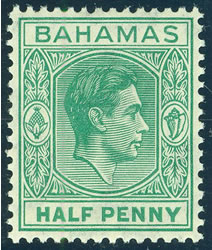
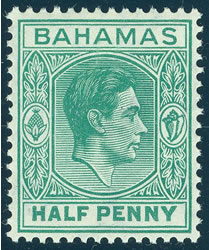
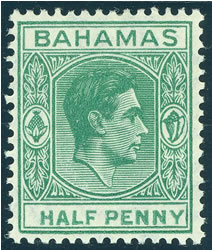
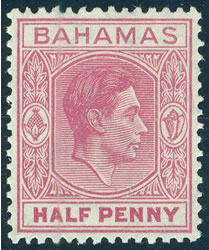
1/2d Green
1/2d Blue-Green
1/2d Deep Green
1/2d Claret
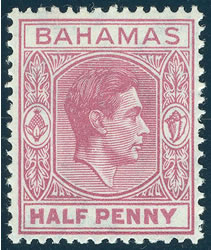
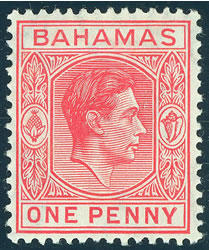
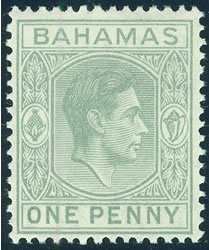
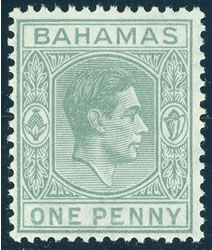
1/2d Deep Claret
1d Rose-Carmine
1d Grey
1d Pearl-Grey
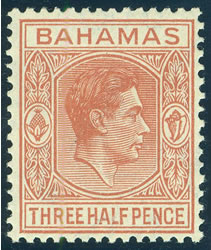
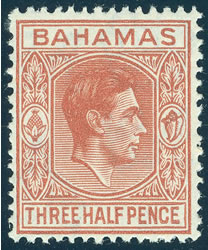
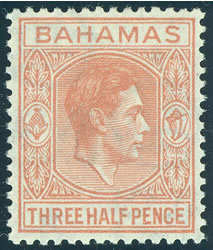
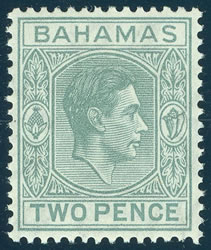
1-1/2d Red-Brown
1-1/2d Deep Red-Brown
1-1/2d Very Pale Red-Brown
2d Pale Grey
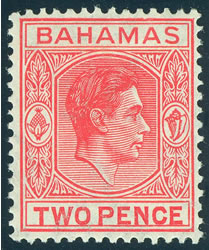
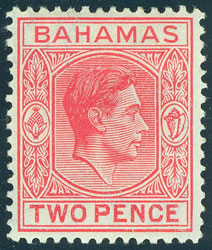
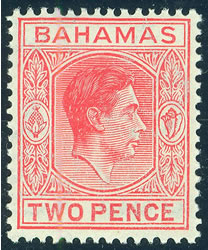

2d Dark Scarlet
2d Rose-Red
2d Dull Carmine
2d Yellow-Green
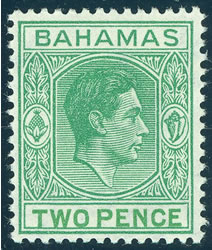
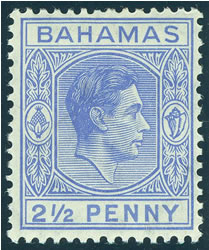
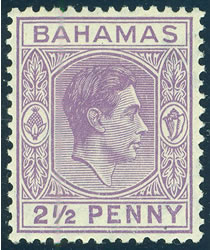
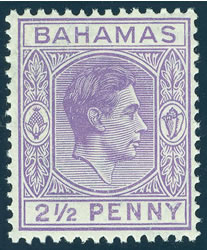
2d Green &
Yellow-Green
2-1/2d Blue
2-1/2d Dull Violet
2-1/2d Violet
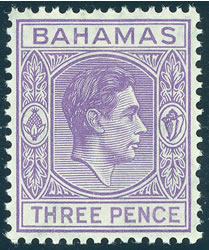
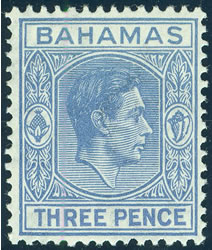
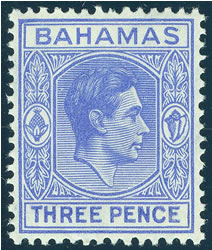
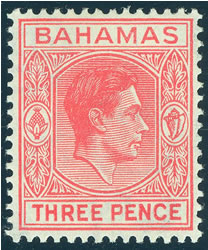
3d Pale Violet
3d Blue
3d Bright Blue
3d Rose-Carmine
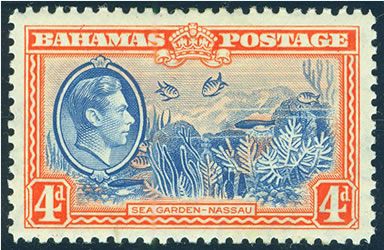
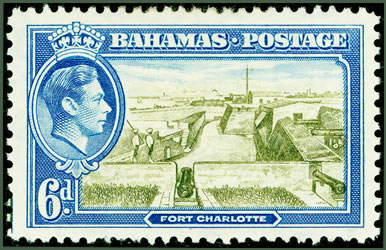
4d Light Blue & Orange-Red
6d Olive-Green & Light Blue
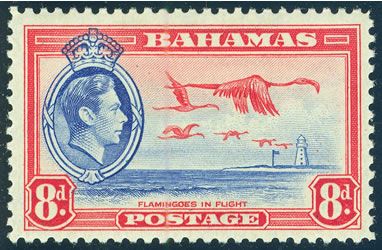
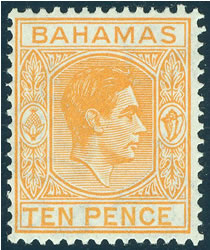
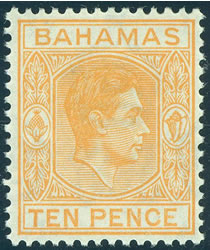
8d Ultramarine & Red
10d Orange
10d Orange-Yellow
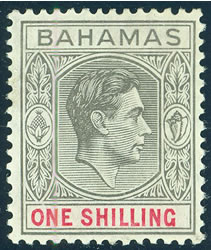
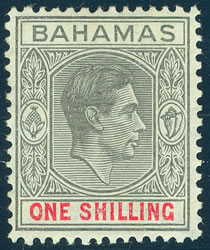
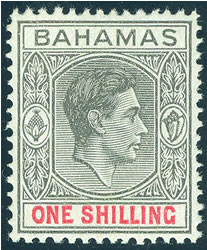
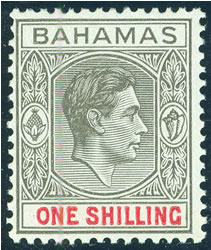
1/ Black &
Carmine
Chalk Paper
1/ Grey &
Scarlet
Thin Striated Paper
1/ Black &
Carmine
Substitute Paper
1/ Grey &
Scarlet
Substitute Paper
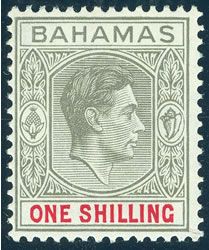
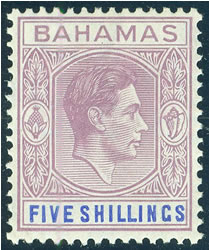
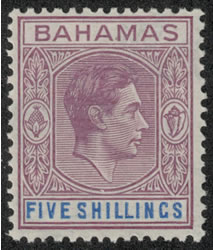
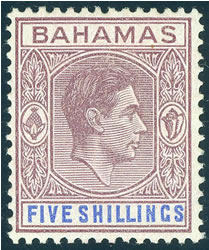
1/ Dull Grey &
Deep Crimson
Chalk Paper
5/ Pale Lilac &
Blue
Chalk Paper
5/ Lilac &
Blue
Thin Striated Paper
5/ Purple-Lilac &
Blue
Substitute Paper
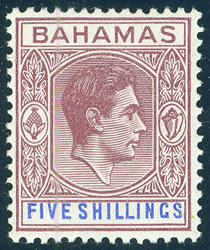



5/ Brown-Mauve &
Deep Blue
Substitute Paper
5/ Deep Purple &
Deep Blue
Chalk Paper
5/ Red-Purple &
Bright Blue
Chalk Paper
£1 Green &
Black
Chalk Paper
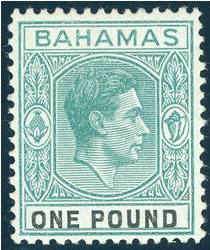
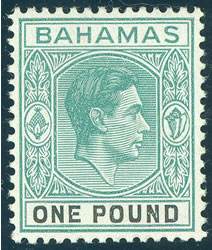
£1 Blue-Green &
Black
Substitute Paper
£1 Dull Green &
Black
Substitute Paper
This article was written to help you identify your stamps.
Please feel free to ask a question, or include a correction.